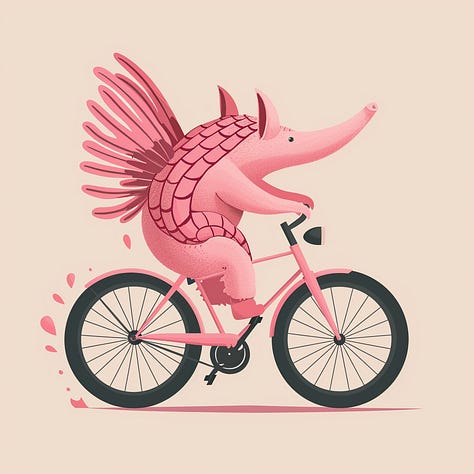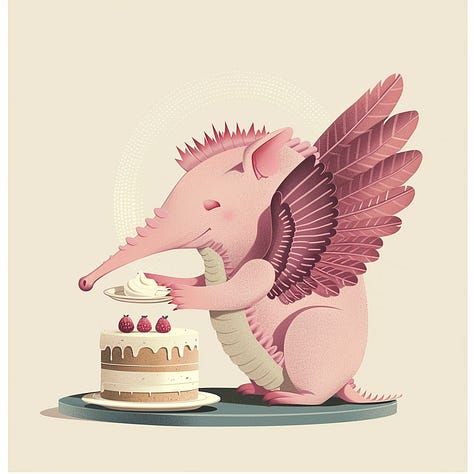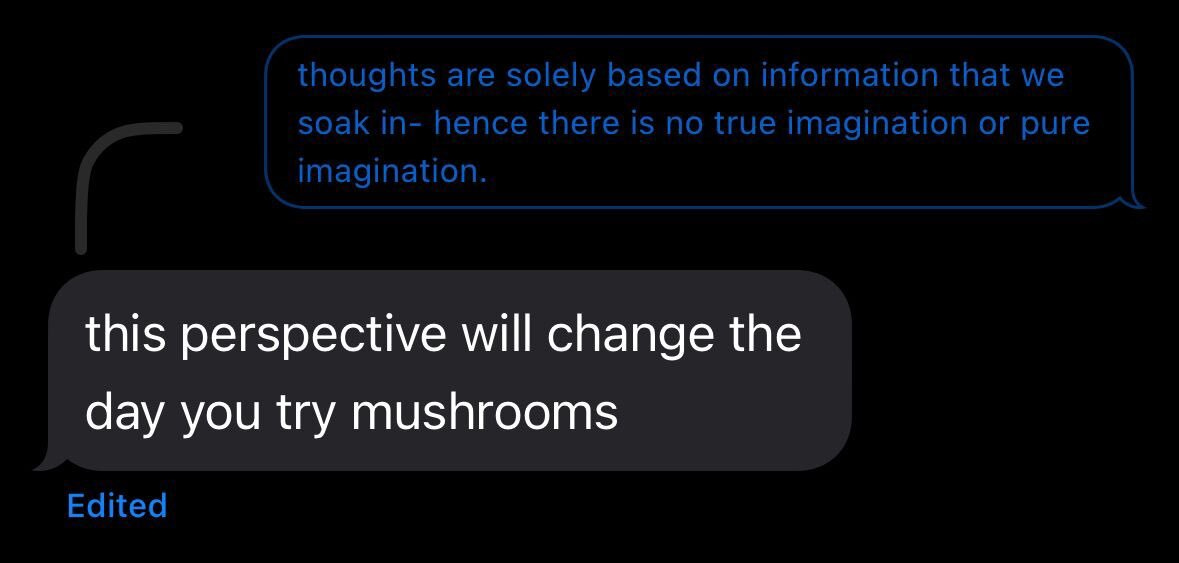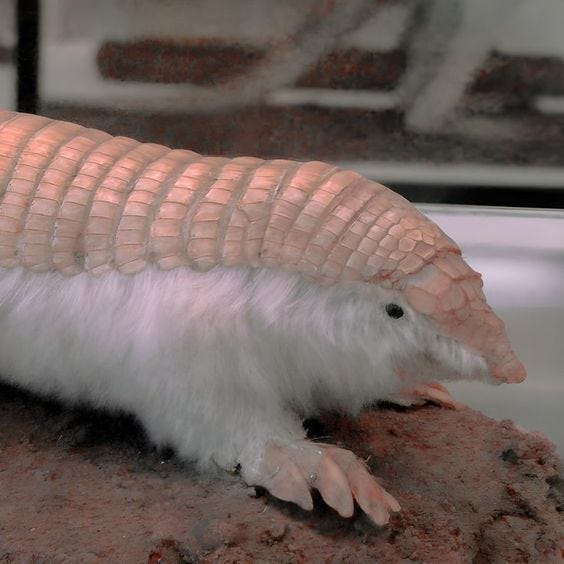I like pink fairies. I like armadillos. I like pink fairy armadillos.



I like pink fairy armadillos so much that I want you to imagine one named Armo.
Armo is insanely cool!!!!
Armo can ride a bike. He can swim in the pool and bake a cake too.



If you think Armo is a figment of my imagination, you aren’t wrong. But if you think Armo is purely a piece of my imagination, you are indeed wrong.
Okay, then if Armo is real, what does he look like? He looks like this instead —
That’s Armo, the real pink fairy armadillo. Though he is not exactly how I imagined him to be, he is quite cute (and sadly endangered🥺).
Okay, that aside — let us get back to imagining.
Imagine Armo again now. Can you imagine Armo riding a bike, swimming or baking? How did you imagine it this time around? It is likely that you imagine the real Armo and not my cartoon buddy Armo. Your view of Armo changed based on the new set of information provided to you. This is how information manipulates your imagination.
Because I am a curious cat, I was wondering if information is really that powerful. So naturally, I tested this out with MidJourney (MJ). I wanted to see how MJ would /imagine the prompts and whether the order of my information mattered. I know MJ is an AI bot, so you will probably tell me that every time a new set of images will be created and this experiment is useless. No, it is not.
MJ may generate different images on the same prompt but there is always some level of resemblance between images. What we are looking for is whether the images change its composition drastically based on the prompts I give. I will jumble up the three words ‘pink’, ‘fairy’ and ‘armadillo’ in combinations to see what happens.
a pink fairy armadillo, minimalistic cartoon
a pink armadillo fairy, minimalistic cartoon
What do we conclude from this? The order does matter. What comes last became the base of its imagination and every other piece of preceding information becomes knowledge to shape the original interpretation.
Elements can become less noticeable or disappear when they follow more dominant descriptors, as the AI reinterprets subsequent elements based on the established context. For instance, in a ‘pink fairy armadillo’, the ‘armadillo’ may take on an ethereal, less literal form to align with the fairy descriptor. First, the word ‘pink’ set the color palette of the image. Then, ‘armadillo’ is used as the base descriptor while ‘fairy’ acts as an added characteristic to the form. So, the images look more like an armadillo with fairy characteristics. However, if it is ‘armadillo fairy’, then it would make it more fairy than armadillo.
a pink fairy armadillo, minimalistic cartoon
a fairy pink armadillo, minimalistic cartoon
Another subtle example is starting with ‘pink’ first sets the color palette before incorporating armadillo and fairy characteristics while beginning with ‘fairy’ before pink interprets fairy as a tone of the color pink and anchors the image in the animal’s form rather than the fairy-like qualities. Hence, characteristics of MJ’s imagined cartoons changed based on the perceived order of importance of the terms of the prompt.
Just like MJ, we are creatures who permutate and combine information to construct novel, imaginative thoughts. How exactly?
Our thoughts are bound by information. Our bodies are designed to soak up information. The largest organ of our body is the skin. Our skin is designed to trace the slightest tactile sensations. Similarly, our other four sense organs are constantly gathering information around us. We are programmed to be ‘information seekers’. This information is what helps us form thoughts.
Thoughts are information-hungry. The more information you have, the richer your thoughts. Your thought is an electrochemical process in your brain, dependent on incoming information. Information is like a feeder to the brain to make new connections. The process of forming these connections is called thinking. We imagine because we think.

Knowledge manipulates imagination. The more we think, the better we get at imagining. With Armo, I showed that the introduction of new useful information can alter our mental image and perception. Initially, Armo might be seen as a whimsical, cartoonish character — but with the knowledge of what a real pink fairy armadillo looks like, our imagination adjusts to incorporate this reality. The more details and context we receive, the more nuanced and accurate our mental models become. This process isn’t unique to imagining armadillos; it applies to all aspects of our cognitive functions. Our dreams, ideas and creative endeavors are all influenced by the knowledge we absorb.
So what is the essence of imagination? Is it merely a blend of the information we’ve gathered, or is there more to it? Imagination is indeed fueled by information, as it provides the raw materials our minds use to construct new ideas and scenarios. However, imagination is more than just a mechanical recombination of data.
When the apple fell on Newton’s head, it was not a novel experience. Apples fall. They have been falling for centuries. Then why was this any different? Because the idea of gravity was born through the active recognition of a pattern that all objects around him have been falling to the ground, hence there must be some force that pulls us down. He perceived a pattern, a concept that linked various observations together to form a coherent theory. His imagination led to the discovery of gravity—took the simple act of an apple falling and expanded it into a universal principle that explained countless phenomena.
Imagination is the ability to synthesize information into new, often abstract concepts to what we call ‘knowledge’. It allows us to see beyond the immediate and the obvious, to envision possibilities that don’t yet exist. This creative process is where the magic happens—where information becomes the spark for innovation and discovery. It is the art of weaving information into new tapestries of thought, creating something greater than the sum of its parts. From gravity to Armo, it is this imaginative capability that has driven human progress and will continue to do so.
If you want to know more about AI prompt engineering, here is where you look.
If you have made it till here, you deserve access to my favorite ted-talks on this topic:
And here is another real life Armo video:








